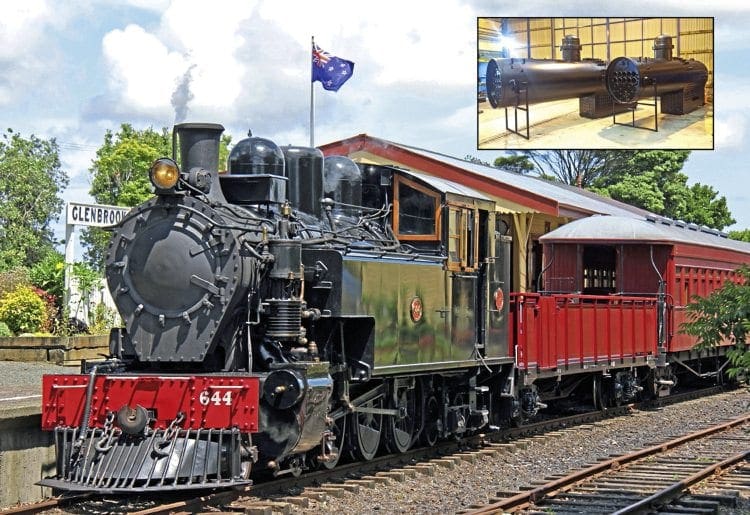The article by Geoff Courtney in last month’s issue of Heritage Railway on the continuing and controversial restoration of former NSW Government Railways C38 class No. 3801, provided a stark contrast to our recent experience at Glenbrook Vintage Railway near Auckland,
New Zealand.

We have recently taken delivery of not one, but two new boilers for our ex-New Zealand Railways Ww class 4-6-4T Nos. 644 and 480. These boilers, built for us by RCR Energy of Dannevirke, North Island, are the largest locomotive type to have been constructed in NZ for 55 years, and the design has been modernised to latest NZ and Australian codes, with valuable input from Puffing Billy Railway and Queensland Railways, and the boilers have been fully approved and pressure-tested by our certifiers, SGS, as being fit for service.
I have been the instigator, design co-ordinator and manager of the project, and it has been a most interesting and satisfying process. As I am also responsible for the hands-on maintenance of our locos, I have been able to incorporate some features in the design that will make the boilers more maintenance friendly.
Enjoy more Heritage Railway reading in the four-weekly magazine.
Click here to subscribe & save.
As a member of Transport Heritage New South Wales, which is now managing the No. 3801 restoration, I have been totally exasperated by the 3801 debacle, about which I believe we are still in the dark. I always wondered why, if DB Meiningen, which built the now discarded new boiler for 3801, can manufacture a perfectly satisfactory boiler for your A1 Pacific No. 60163 Tornado boiler, it couldn’t build a not dissimilar boiler for No. 3801.
How come Meiningen’s 3801 boiler “didn’t meet codes?” Surely the codes were specified, drawings checked and approved, and the work regularly inspected to ensure compliance. If a small, self-funded and all-volunteer outfit such as ours can draw up a detailed spec, have the designs checked and approved by internationally-recognised certifier SGS, and the work inspected weekly by them, so that we now have fit for purpose certificates for the boilers, why couldn’t the NSW state government guys in charge of the 3801 project?
Of course, our boilers have yet to be fitted, but as they are identical in overall dimensions to the old ones, we have every confidence that this will not be a problem.
Heritage Railway is widely read in NZ and Australia, and I would hope that some Aussie readers might ask: “If the Kiwis can do it, why couldn’t NSW?”
John St Julian, workshop manager, Glenbrook Vintage Railway,
New Zealand.
Read more letters, opinion, news and views in Issue 222 of Heritage Railway
Advert
 Enjoy more Heritage Railway reading in the four-weekly magazine. Click here to subscribe.
Enjoy more Heritage Railway reading in the four-weekly magazine. Click here to subscribe.




